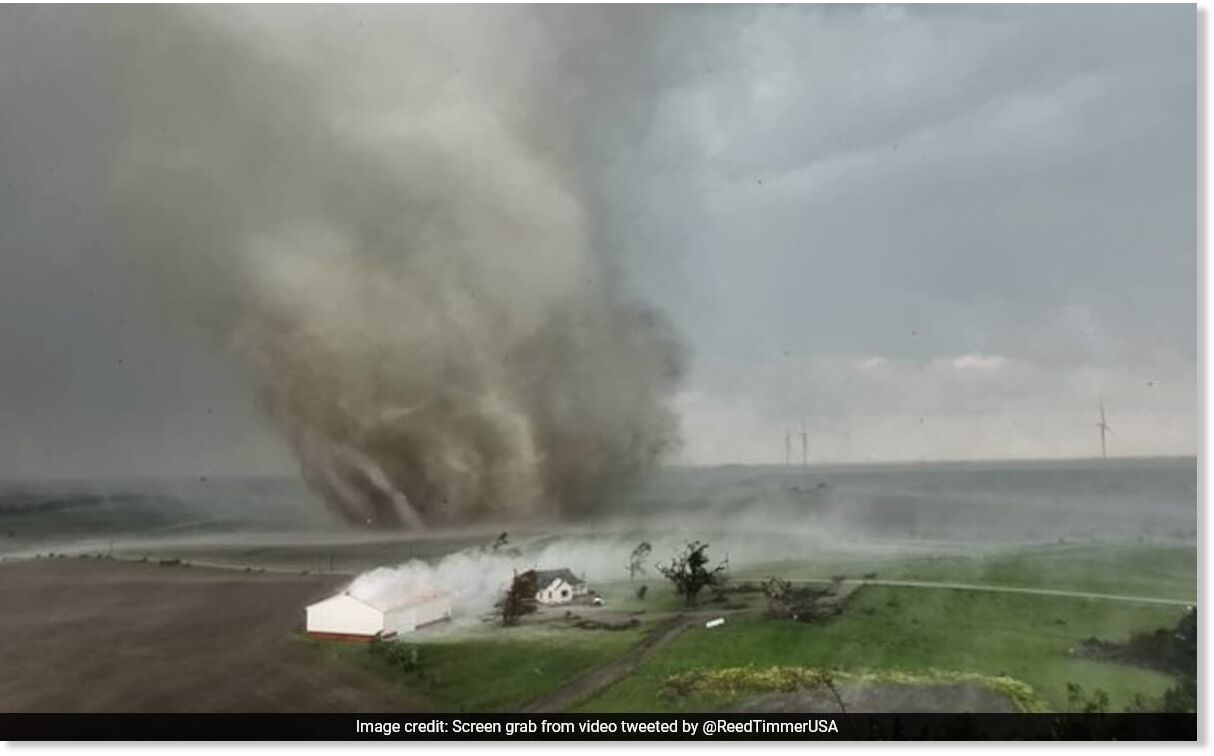Overview of the Greenfield, Iowa Tornado: Greenfield Iowa Tornado

The Greenfield, Iowa tornado was a devastating EF4 tornado that touched down on May 25, 2004, causing widespread damage and loss of life. It was part of a larger outbreak of tornadoes that affected the Midwest and Great Plains regions of the United States.
Timeline of Events
The tornado formed near the town of Greenfield at approximately 5:45 PM CDT and traveled northeast for approximately 20 miles (32 kilometers), dissipating near the town of Dexter at around 6:30 PM CDT. Along its path, the tornado caused significant damage to homes, businesses, and infrastructure.
Impact, Greenfield iowa tornado
The Greenfield tornado resulted in the deaths of six people and injured dozens more. It caused an estimated $100 million in damages, destroying or damaging hundreds of homes and businesses. The tornado also uprooted trees, downed power lines, and caused widespread power outages.
Intensity and Wind Speeds
The Greenfield tornado was rated an EF4 on the Enhanced Fujita Scale, with wind speeds estimated to have reached up to 175 miles per hour (280 kilometers per hour). It was the strongest tornado to hit Iowa since the 1979 Wichita Falls tornado.
Causes and Characteristics of the Greenfield, Iowa Tornado

Greenfield iowa tornado – The formation of the Greenfield, Iowa tornado was a result of a complex interplay of meteorological conditions. A powerful low-pressure system, fueled by warm, moist air from the Gulf of Mexico, collided with a cold front, creating an unstable atmosphere. The resulting updrafts and downdrafts provided the necessary energy for the tornado’s development.
The Greenfield, Iowa tornado exhibited several unique characteristics that contributed to its severity and destructive power. Its size, shape, and duration were all notable factors.
Size
The tornado had a diameter of approximately 1.5 miles (2.4 kilometers), making it one of the widest tornadoes ever recorded. This immense size allowed it to cover a vast area, resulting in widespread damage.
Shape
Unlike most tornadoes that appear as narrow, funnel-shaped clouds, the Greenfield, Iowa tornado had an unusual shape. It resembled a wedge, with a broad base and a relatively flat top. This shape increased the tornado’s surface area, allowing it to inflict greater damage.
Duration
The tornado had an unusually long duration, lasting approximately 70 minutes. This prolonged period of time allowed it to cause extensive damage as it moved through the area.
Factors Contributing to Severity
Several factors contributed to the severity of the Greenfield, Iowa tornado. The combination of its large size, unusual shape, and long duration made it a particularly destructive force. Additionally, the tornado occurred in a relatively populated area, resulting in a high number of casualties and property damage.
Aftermath and Recovery from the Greenfield, Iowa Tornado

The aftermath of the Greenfield, Iowa tornado was devastating. The tornado left a path of destruction over a mile wide and several miles long, destroying homes, businesses, and infrastructure.
In the immediate aftermath of the tornado, search and rescue operations were launched to locate and assist survivors. The efforts were hampered by the widespread damage and the lack of communication and transportation infrastructure. Survivors faced challenges such as finding shelter, food, and medical care.
Long-Term Recovery
The long-term recovery process from the Greenfield, Iowa tornado was a complex and challenging undertaking. Rebuilding efforts began almost immediately, with volunteers and construction crews working to repair and reconstruct homes and businesses. Community support played a vital role in the recovery process, with local organizations and individuals providing assistance to survivors.
The tornado also prompted a reassessment of building codes and emergency preparedness plans in the area. Lessons learned from the disaster helped to improve the community’s resilience to future tornadoes and other natural disasters.